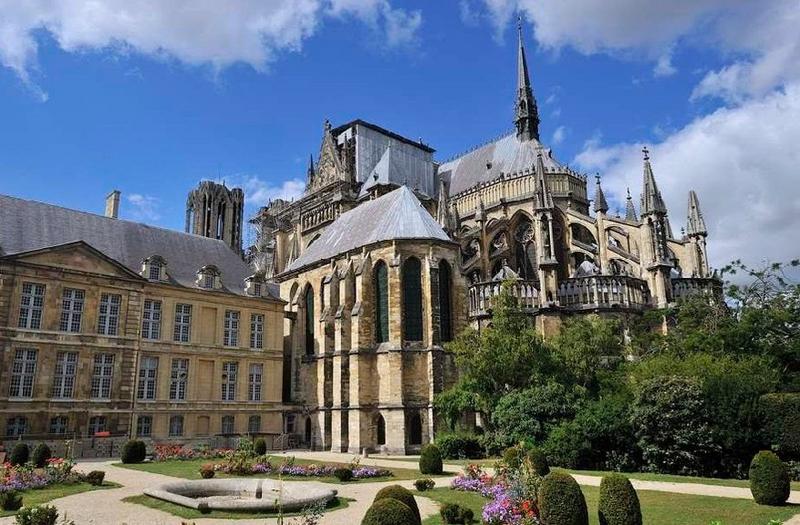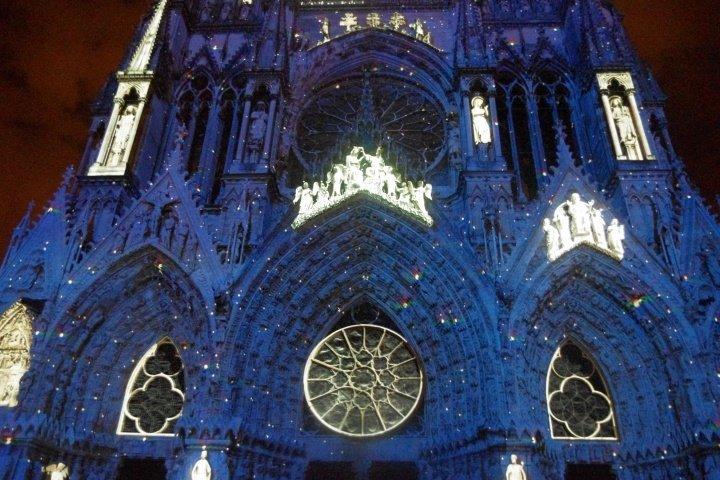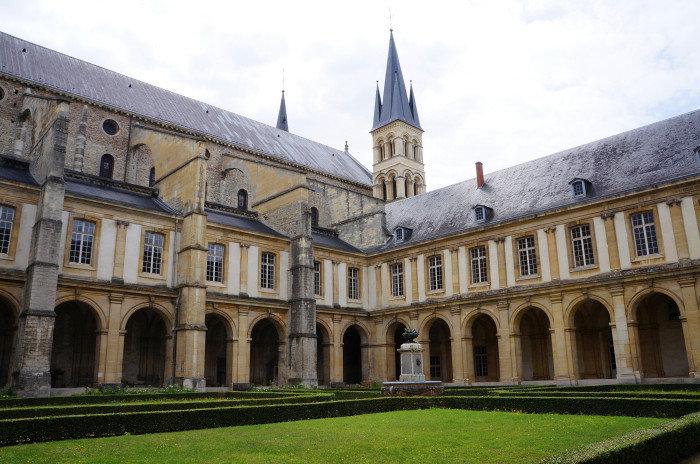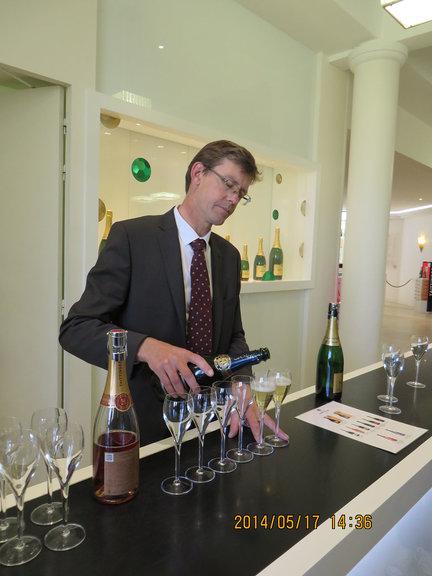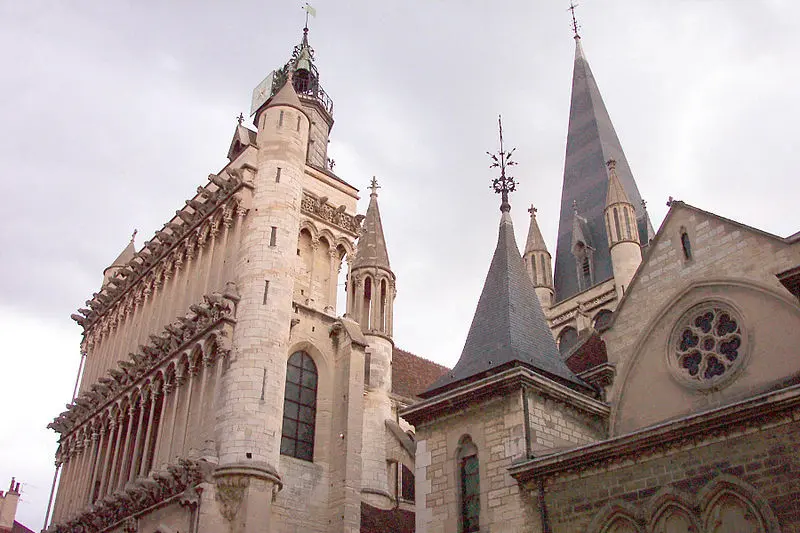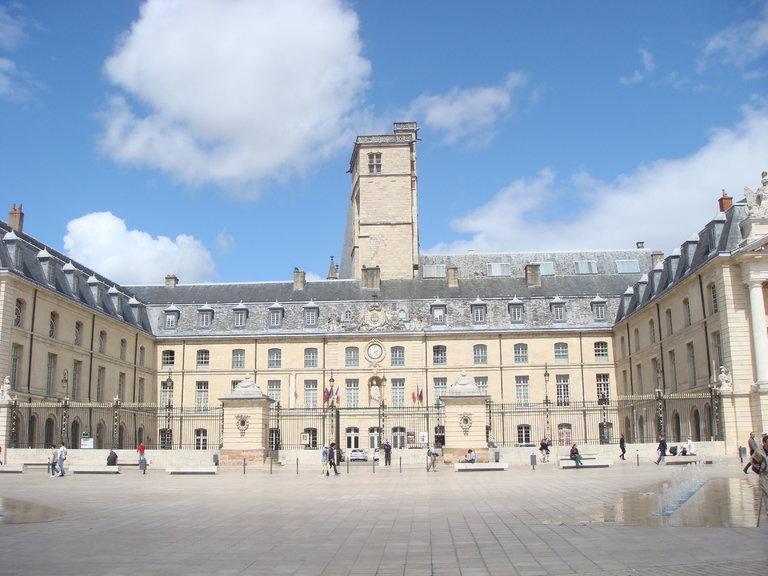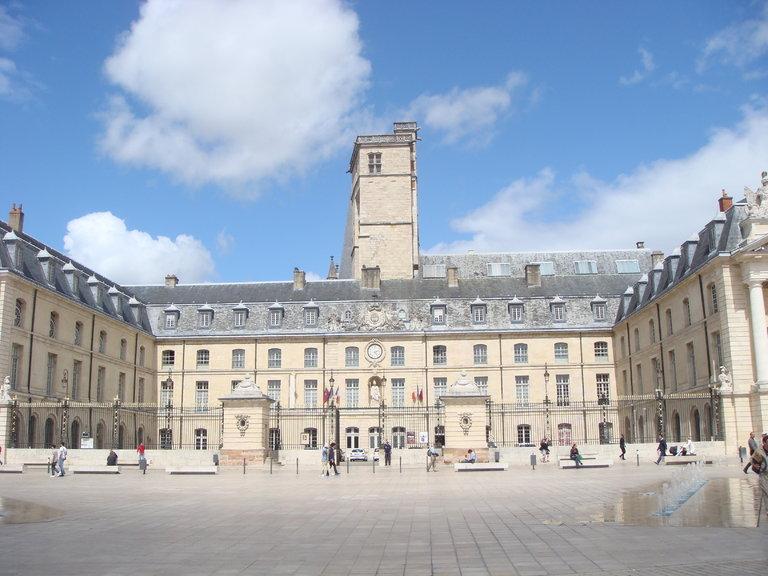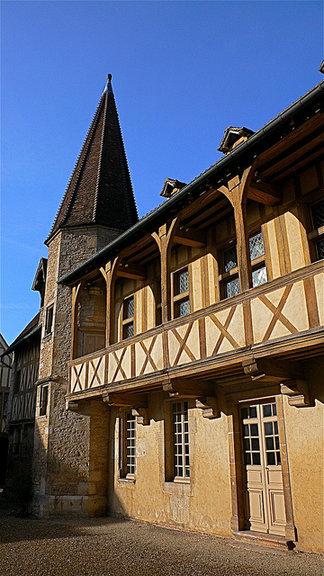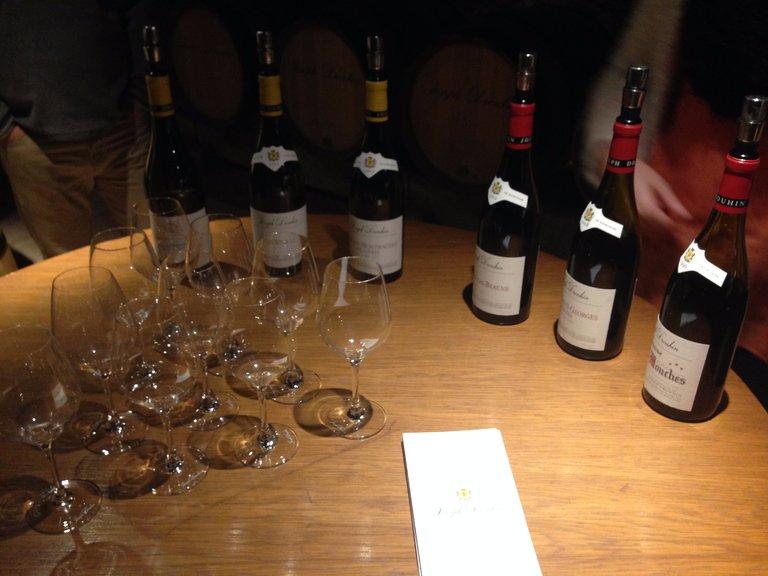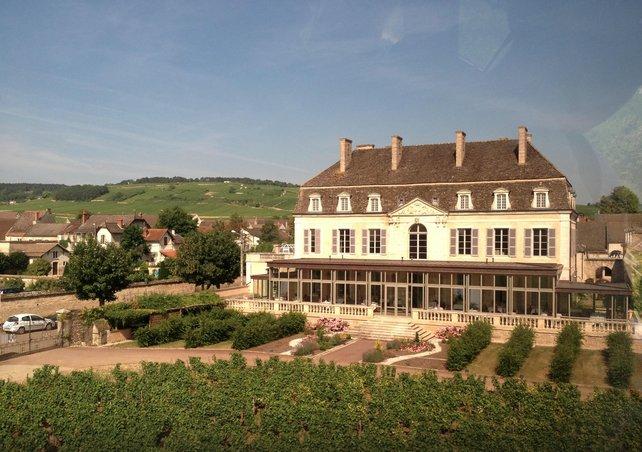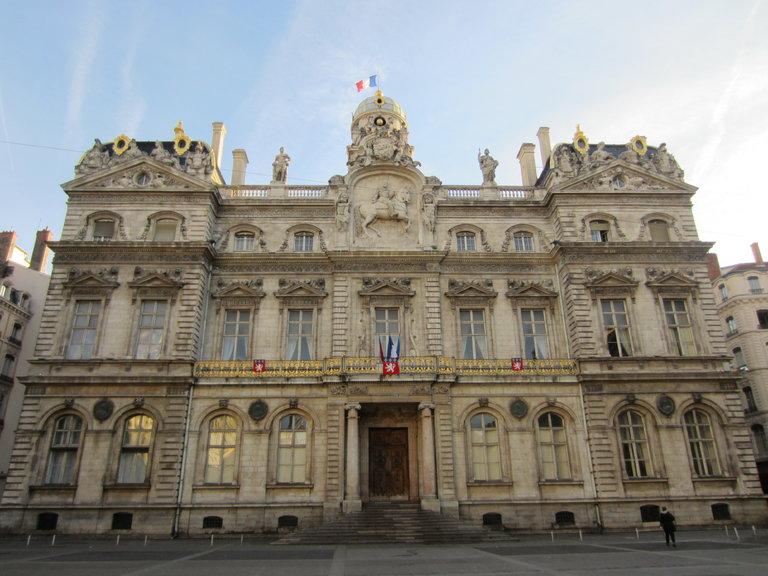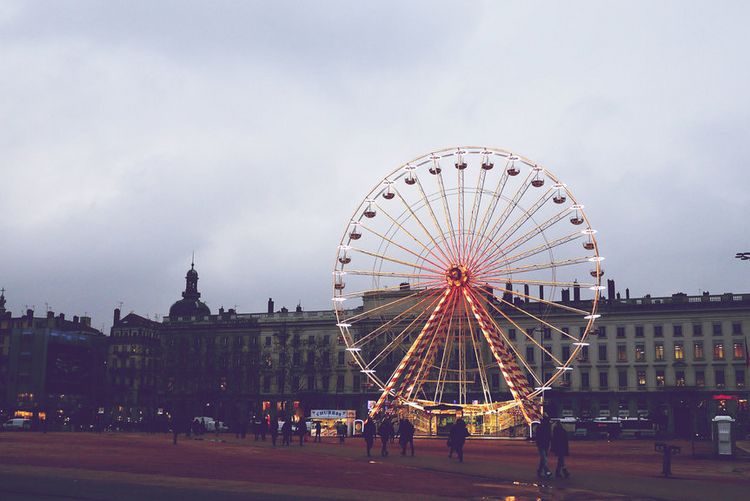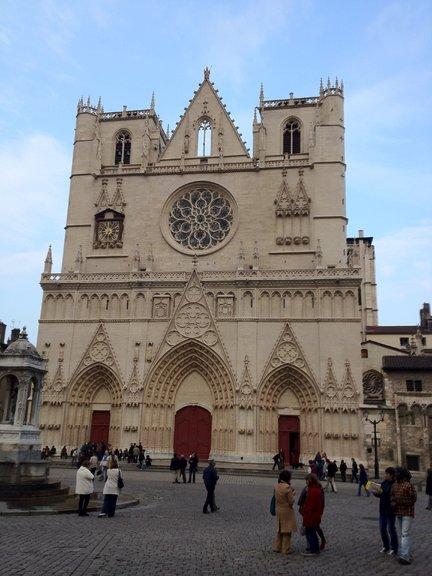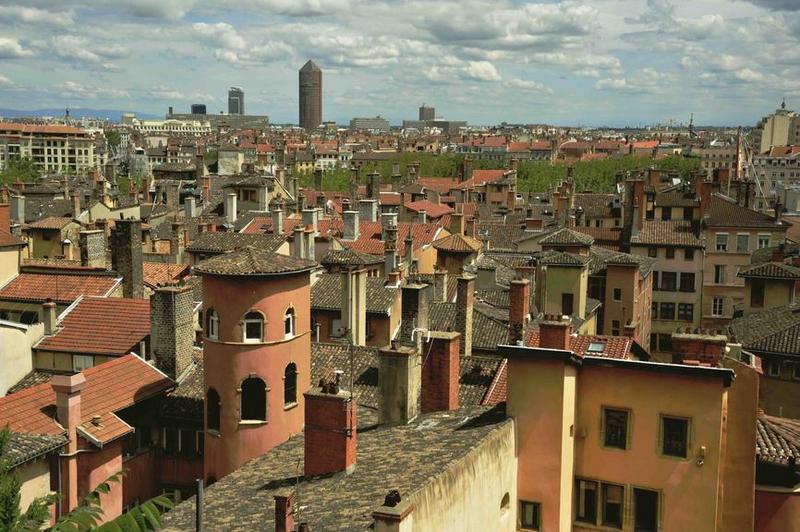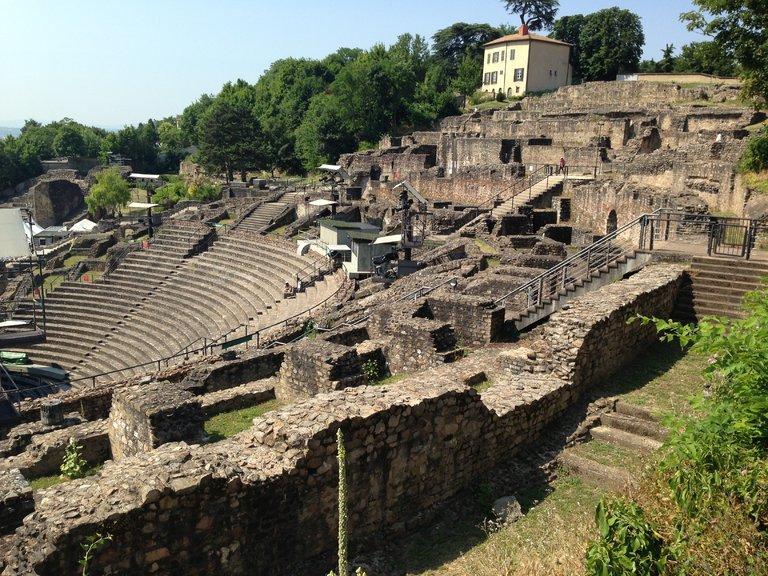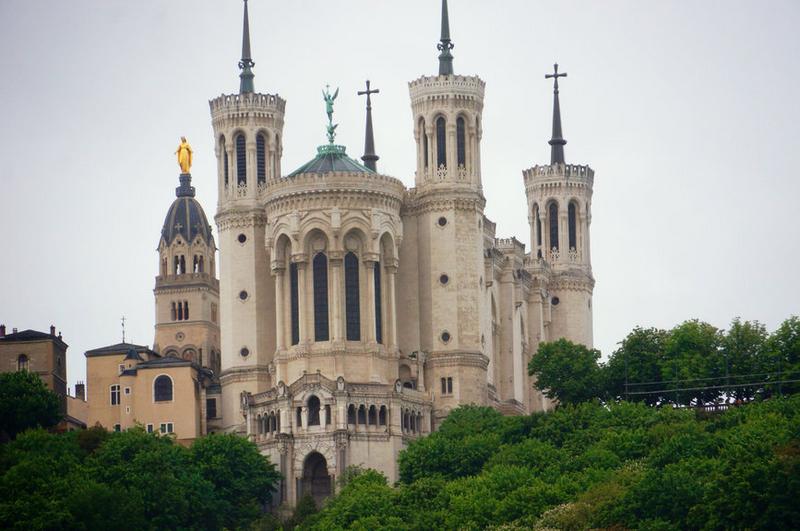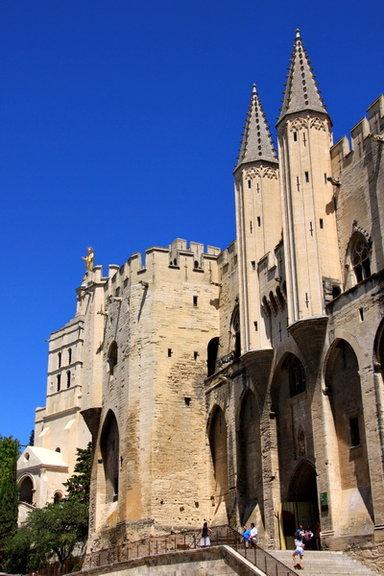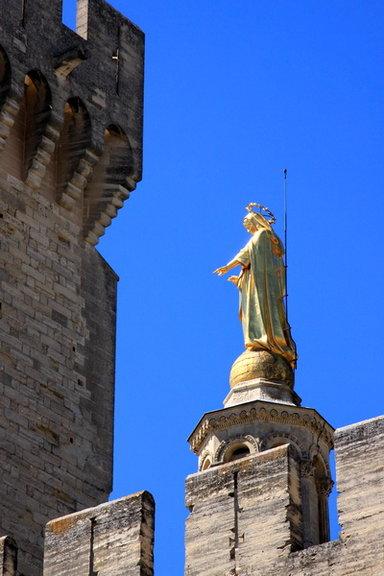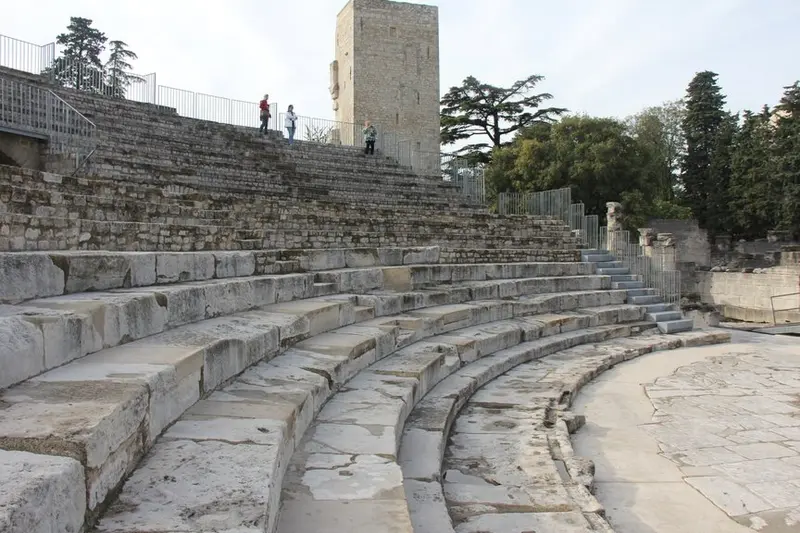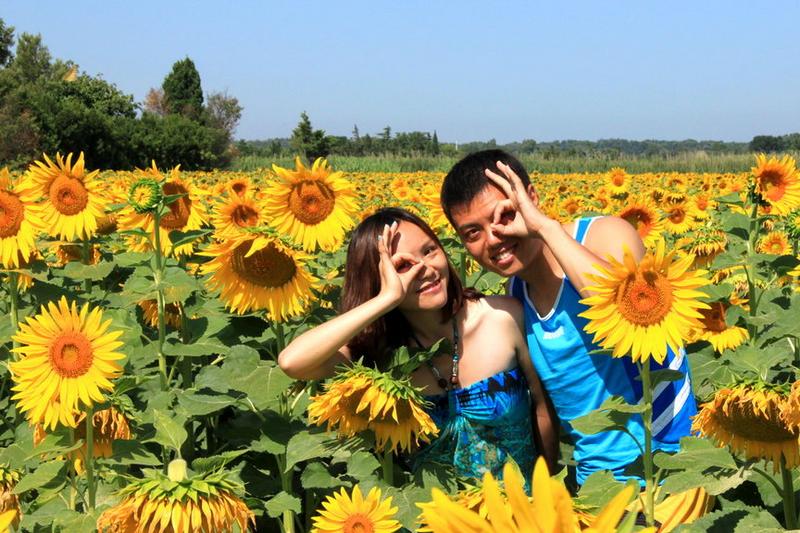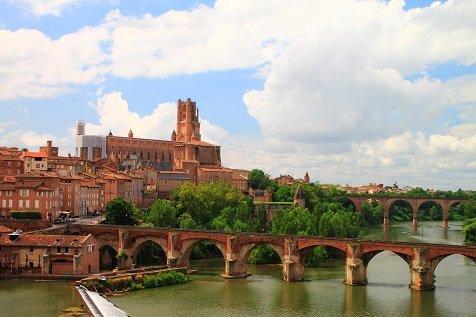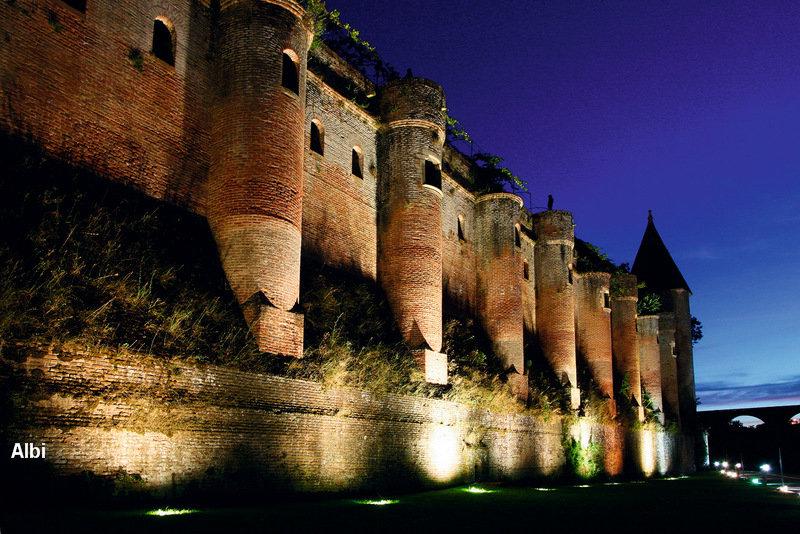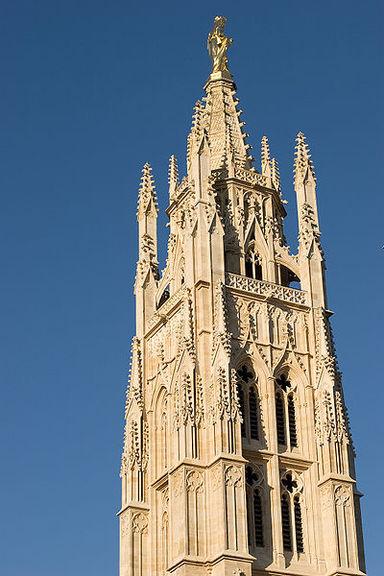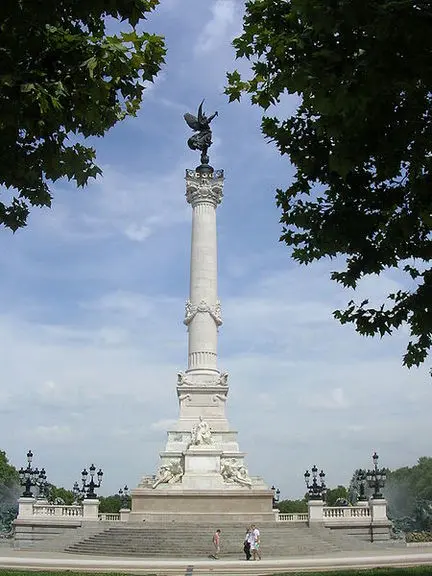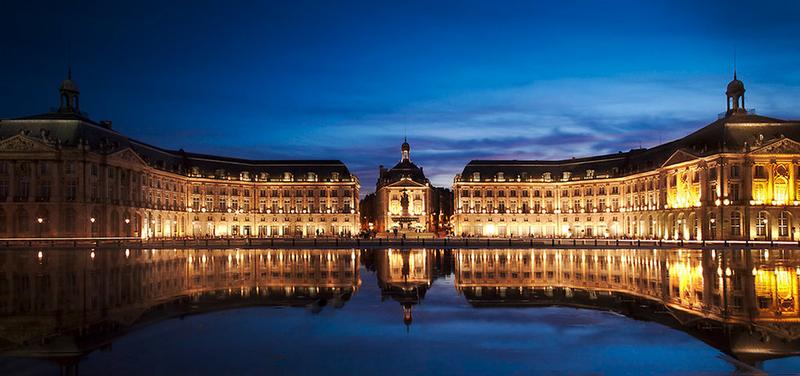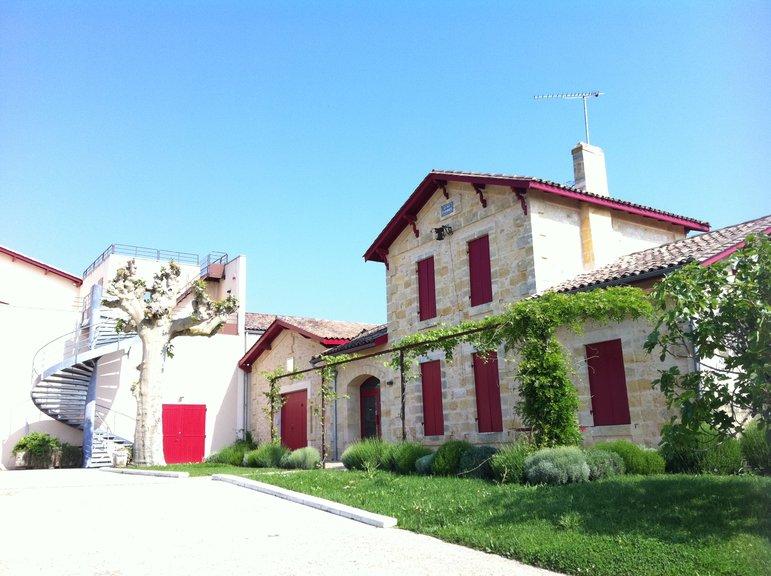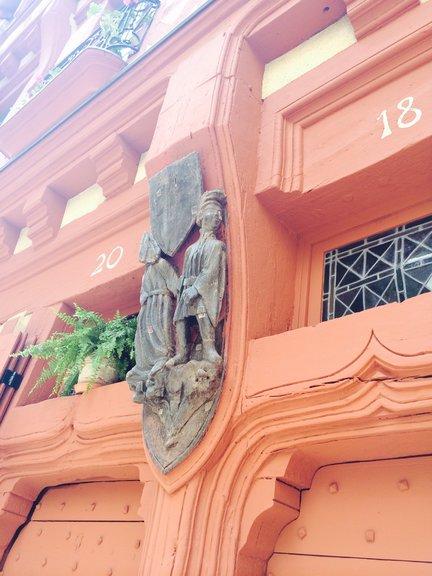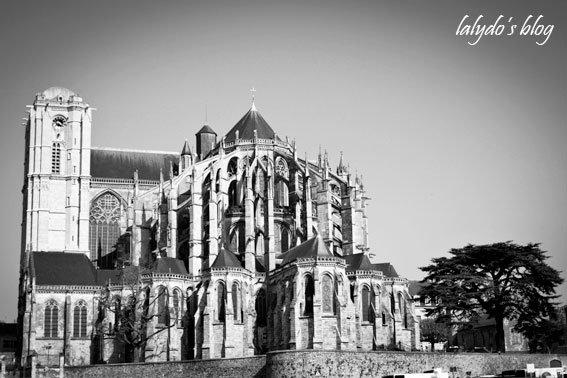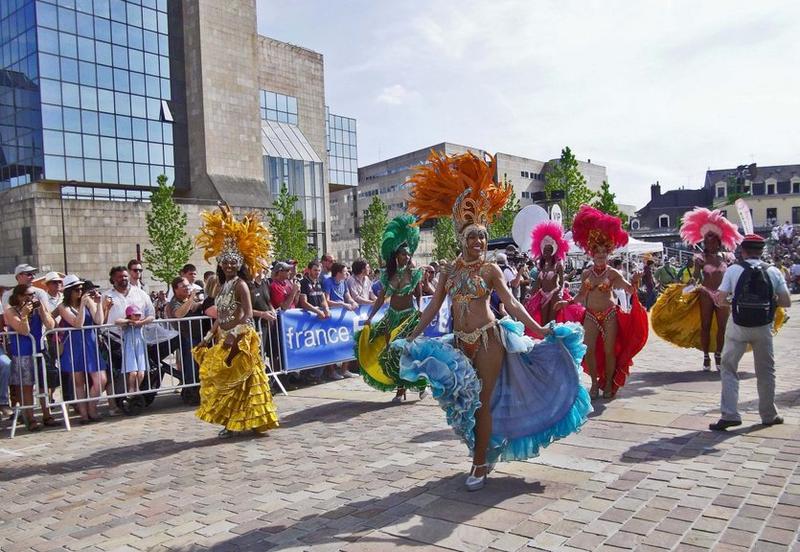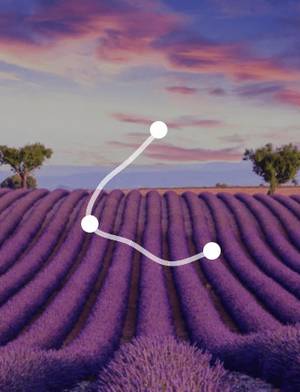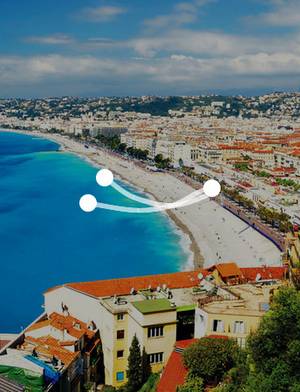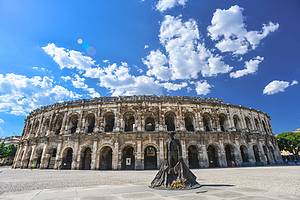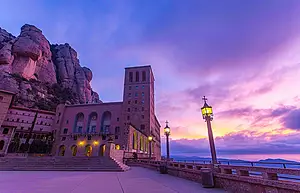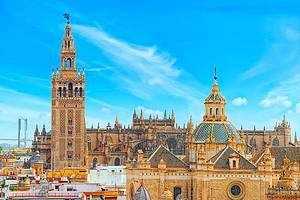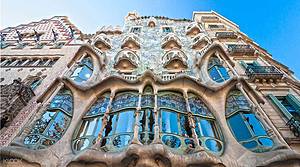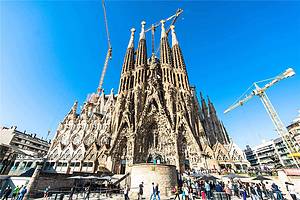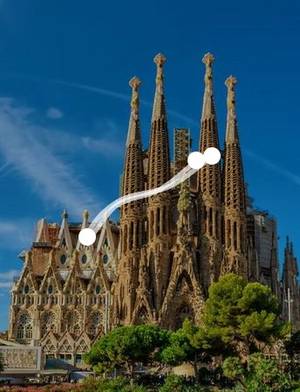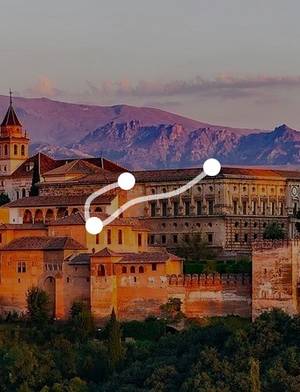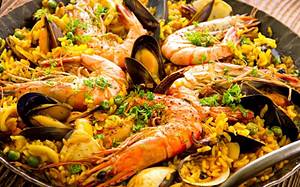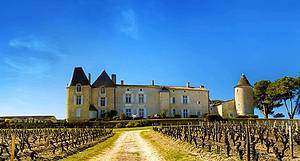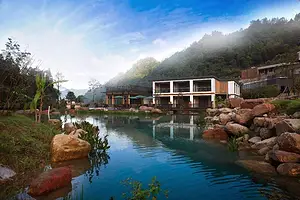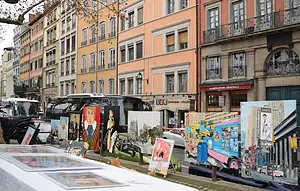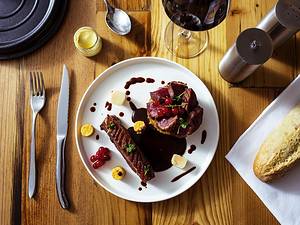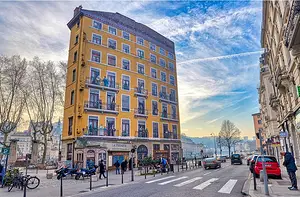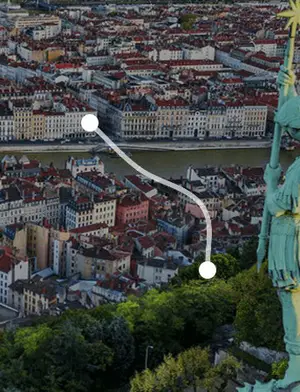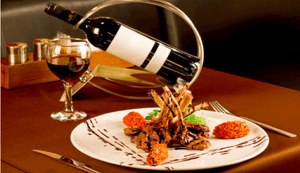9-day Classic Self-drive Route of Tour de France
11 cities |
48 attraction(s) |
total distance 678
km
 TIPS
TIPS
Day1
Day2
Day3
Day4
Day5
Day6
Day7
Day8
Day9
Day1: Paris
5 attraction(s) ·
13 km
1
The Louvre Museum, the former residence of the French kings, is one of the largest museums in the world. It is divided into eight departments: Oriental Antiquities, Egyptian Antiquities, Greek and Roman Antiquities, Paintings, Sculptures, Art Objects, Islamic Art, and Medieval to 1848. The Louvre was originally a fortress in the late 12th century and was later converted into a royal palace by King Francis I. It has a rich collection of art treasures, including famous Italian paintings. After the French Revolution, it was opened as a museum and has been expanded multiple times, especially during the reigns of Napoleon and Napoleon III. The Louvre is famous for its glass pyramid, designed by Chinese architect I.M. Pei in the 1980s. It houses a vast collection of artworks from different cultures and periods before 1848, including ancient Egyptian, Near Eastern, and Middle Eastern civilizations, ancient Greek and Roman civilizations, Islamic art, and works from the Middle Ages to the mid-19th century. With over 400,000 items in its collection, only about 40,000 are on display. It is recommended to plan your visit based on your preferences, with highlights including the Italian and French painting galleries, the Ancient Egypt section, the Greek and Roman art section, and the Napoleonic apartments.
4
km
2
The Champs-Élysées is a famous avenue in Paris, located in the 8th arrondissement. It is considered to be the most beautiful street in Paris. The avenue stretches from the Arc de Triomphe in the west to the Place de la Concorde in the east. It is part of the city's central axis, along with the Arc de Triomphe du Carrousel. The avenue is often crowded and features luxury brands such as Cartier and Mont Blanc. During holidays, it is decorated with special lights and hosts events like the Bastille Day parade and the final stage of the Tour de France.
2
km
3
The full name of the Arc de Triomphe, located in the center of Place Charles-de-Gaule in Paris, is "Arc de Triomphe de l'Étoile". It was built in 1806 to celebrate a major victory in the "Battle of Austerlitz". Despite Napoleon laying the first stone, he did not live to see its completion. The French people held a funeral for him under the Arc de Triomphe 20 years after his death.
Beneath the Arc de Triomphe, there is an unknown soldier's tomb and an eternal flame in memory of the 1.5 million French soldiers who sacrificed themselves in World War I. On major holidays, a large French flag is hung on top of the Arc de Triomphe, and commemorative activities take place, such as on the anniversary of World War II on May 8th and on Armistice Day on November 11th.
The Bastille Day military parade, held every year on July 14th, starts from the Arc de Triomphe and continues to Place de la Concorde. If you want a good spot, you need to arrive early. During New Year's, the Arc de Triomphe is also a central gathering point, with a large crowd, although there are no fireworks in Paris on New Year's Eve.
The Arc de Triomphe is surrounded by twelve major avenues, with the famous Champs-Élysées, which connects to Place de la Concorde and faces the Louvre Museum, being one of them. This nearly 2-kilometer long avenue is considered one of the most beautiful streets in the world.
3
km
4
The Eiffel Tower, built in 1889, was originally constructed to welcome the World Exposition and commemorate the 100th anniversary of the French Revolution. Standing at a total height of 324 meters, it symbolized the industrial revolution that swept the world at that time. However, after its completion, it faced skepticism from many French people. Its massive steel structure seemed out of place in the entire city of Paris, and some even proposed demolishing it. However, today it has become an undisputed symbol of Paris and France.
Visitors can take the elevator or climb the stairs to the tower to overlook the entire city of Paris (stairs only go up to the second floor). From dusk to dawn after the turn of the millennium (2:00 in summer, 1:00 in winter), the tower sparkles for ten minutes on the hour. During special holiday events, it may have special colors, such as flashing red during the Chinese New Year or blue on European Union Day. On July 14th, the National Day, visitors can enjoy concerts on the Champ de Mars, the square beneath the tower, and it is also a great spot for New Year's countdown.
There are two restaurants on the tower, Tour Eiffel 58 on the first floor and Jules Verne, a Michelin one-star restaurant, on the second floor. The advantage of dining on the tower is that the restaurants can assist with reservations or provide tickets to go up the tower, eliminating the need to queue below. As for these two restaurants, Tour Eiffel 58 offers lunch starting from 19 Euros (mainly sandwiches), and dinner starting from 80 Euros, like a regular restaurant with a significant service charge. On the other hand, Jules Verne, now with only one Michelin star and overseen by chef Alain Ducasse, offers lunch starting from 90 Euros and dinner starting from around 300 Euros per person. If not for the experience of the environment, the author suggests exploring other three-star Michelin restaurants at a similar price but with better food. However, due to their special location, it is not easy to dine there, and it is best to make reservations at least two months in advance during peak season.
5
km
5
The Seine River is the second largest river in France, flowing through the center of Paris. It is 780 kilometers long and has a drainage area of 78,000 square kilometers. The river is constrained by artificial stone embankments in the central section of Paris, which were inscribed on the UNESCO World Heritage List in 1991. The French refer to the north bank of the Seine as the "right bank" and the south bank as the "left bank".
The Seine River in Paris is known for its numerous bridges, with the most magnificent being the Alexander III Bridge, which was a gift from Tsar Nicholas II of Russia and named after his father. Many important cultural and historical landmarks in France are located along the banks of the Seine, such as the Louvre Museum, Les Invalides, the Pantheon, the Orsay Museum, the Palace of Versailles, the Eiffel Tower, and the Arc de Triomphe. The Seine River has also nurtured many world-renowned cultural figures and is considered the mother river of Paris, a city known for its rich cultural heritage.
Day2: Reims
5 attraction(s) ·
6 km
1
The Musee des Beaux-Arts, built in the 18th century, has a rich collection. It was once a military camp during the Napoleonic Wars. One of its highlights is David's masterpiece "Death of Marat," one of only four versions in the world. Additionally, there are 27 works by Corot, second only to the collection at the Louvre, and landscape paintings by the Barbizon school.
1
km
2
Adjacent to the Cathedral of Notre Dame, its name originates from the T-shaped layout. It was once a resting place for the king and his entourage to worship. The Palace of the Bishop is filled with fleur-de-lis, symbolizing the French royal family, and the king's grand feasts have also been held here. The treasury of the Cathedral of Reims is also located here.
2
km
3
The Notre-Dame Cathedral in the capital of the Champagne region, Reims, France, has seen the coronation of 25 French monarchs throughout history. It is the place where the first French king, Clovis, was baptized, and from 1027 until the French Revolution, it was the location for the coronation ceremonies of almost every French king. One of the most famous occasions was in 1429 when Joan of Arc escorted Charles VII here for his coronation. In 1991, the cathedral was listed as a World Heritage Site.
3
km
4
The Basilique Saint-Remi, named after the Archbishop of the same name, is a UNESCO World Heritage Site. The Romanesque nave and transept of the church are still dazzling despite the passage of time. At the top of the church hangs a 12th-century style chandelier, which can hold 96 candles, each representing a phase of the Archbishop's life.
1
km
5
Founded in 1734, Taittinger is also one of the oldest Champagne houses in the region.
Day3: Dijon > Beaune
7 attraction(s) ·
52 km
1
The Notre Dame Dijon was built in the 13th century, with three rows of animal-shaped faux drains separated by two rows of slender columns on the façade of the church. There is a 14th century clock tower on the church.
1
km
2
Built in the 16th century, the church started as a small wooden chapel in the year 889. It has since been expanded and now features a Gothic-style architecture. The main entrance is adorned with elaborate decorations depicting biblical and mythological stories, incorporating Renaissance-inspired details.
1
km
3
Dijon is home to a well-preserved architectural complex. The oldest part includes the 14th and 15th century Gothic Ducal Palace and the residence of the Dukes of Burgundy, the Duke's Palace in the Bar courtyard, the beautiful Philippe Tower (which overlooks the whole city), and the Bar courtyard. However, most of the buildings that can be seen today were built in the 17th and especially 18th centuries in the neoclassical style. The building also houses the Burgundian Parliament. Finally, the former location of the demolished Chapel Palace in the Chapel Square was transformed into an art museum in the 19th century. Today, the Ducal Palace houses the city hall and the art museum.
1
km
4
The square in the center of the city of Dijon, in front of the Palace of the Dukes of Burgundy, is semi-circular.
45
km
5
The Burgundy Wine Museum is located in the center of the old town of Beaune, showcasing various famous wine varieties from the Burgundy region. It is a must-visit place to learn about the wine culture of this region.
1
km
6
Maison Joseph Drouhin is a French winery located in the heart of the Burgundy region, known as one of the most renowned wineries in the region. It has a historic underground cellar dating back to the 13th century, and with subsequent additions, it now occupies half of the underground space in Beaune. Guided tours are available in both French and English, but advance reservation is required through their website.
5
km
7
Château de Pommard is located in the renowned Côte d'Or region of Burgundy, France. Established in 1726, it boasts the largest single vineyard in Burgundy, covering an area of 20 hectares. The estate not only has the largest single vineyard in Burgundy but also includes two châteaux, built in the 18th and 19th centuries respectively. From Louis XV to Napoleon Bonaparte, many royal and noble guests have enjoyed the hospitality of Château de Pommard. Today, the wines of Château de Pommard are served at official dinners in the Élysée Palace, the residence of the French President.
Day4: Lyon
7 attraction(s) ·
5 km
1
The municipal government of Lyon is a classic work of 17th-century architecture. On the western side of the square is a fountain, designed by the same designer of the Statue of Liberty. On the eastern side, there is the modern Lyon Opera House, which is a great place for people to relax and unwind.
2
km
2
Place Bellecour is located in the Presqu'île district and is the largest reddish square in Europe, as well as the third largest square in France. It has a tourist information center and is a great place for leisure. The center of the square houses a statue of Louis XIV.
1
km
3
The Lyon Cathedral, built in 1170, is a perfect blend of medieval and Gothic styles. One must not miss the 15th-century astronomical clock inside the cathedral, which chimes punctually at noon, 2pm, 3pm, and 4pm, accompanied by a performance of little figures. The cathedral is located in the Old Town (Vieux Lyon), at the foot of the Fourvière Hill, where architectural masterpieces from the European Renaissance period can be found, such as the Saint-Georges Church, Saint-Jean Church, and Saint-Paul Church. The pedestrian streets of the old quarter are also a must-visit.
1
km
4
The western bank of the Saone River, known as La Saone, is the area of the old town where the 15th to 17th-century architecture is preserved. Take a stroll along the cobblestone streets to experience the old cityscape. The center of the old town is the Saint-Jean Cathedral, built in the 12th century. A recommended walking route starts from the cathedral and goes all the way to the north, passing by the Saint-Paul Church.
2
km
5
The ancient Roman theater was built during the reign of Emperor Augustus, the adopted son of Caesar, in 15 BC. It is one of the oldest theaters in France, with a large and small theater. At its peak, it could accommodate 10,700 people. It is a great place to watch the sunset and enjoy the sunlight.
1
km
6
Fourvière Hill is the cradle of Lyon and the birthplace of Christianity in Lyon, so it is also called the Prayer Hill. The Festival of Lights in Lyon is closely related to this hill. Here, there is a Baroque-style Basilica built in the 19th century, as well as Roman arenas from ancient times and the Gallo-Roman Museum. Standing on the hill, you can overlook the entire city, and the tallest building is called the Pencil Tower by locals. The opposite hill is the Croix-Rousse district, a slope where textile workers used to gather, also known as the Textile Hill. From here, you can also see the peninsula and districts sandwiched between the two rivers, which is also a great place to enjoy the night view.
1
km
7
The Basilique Notre-Dame de Fourvière in Lyon, France, is a iconic building that represents 10% of the city's world heritage site. It combines Byzantine and medieval architectural styles, with intricate sculptures and two tower-like structures. Built on the site of a square of the Gallo-Roman period, the basilica was constructed from 1870 to 1896. It stands on a hill on the right bank of the Saône River and can be reached by cable car or hiking. The basilica is a landmark of Lyon and showcases a fusion of Byzantine and medieval architecture, with white marble walls, colorful stained glass windows, and exquisite mosaics. It is also known for the golden statue of Virgin Mary on its bell tower, which is said to bless the city. Visitors should be cautious of the weathered condition of the basilica and pay attention to safety.
Day5: Avignon > Arles
8 attraction(s) ·
54 km
1
Avignon was the residence of the Pope in the 14th century, and it is surrounded by a 5-kilometer-long city wall. In 1995, the historic center of Avignon was listed as a World Heritage Site.
2
km
2
Piazza in front of the Papal Palace, sometimes there are performances, very lively, don't miss the surrounding shops, there are many cheap delicacies to taste.
2
km
3
The Papal Palace is an ancient palace located in the southern French city of Avignon. It is the largest and most important Gothic architecture of the Middle Ages in Europe. The Papal Palace is not only the palace of the pope, but also a fortress. In the 14th century, the Papal Palace in Avignon was the seat of the Catholic Church.
2
km
4
The Notre-Dame Cathedral is located next to the Papal Palace and was rebuilt in the mid-12th century. It is the oldest religious building in Avignon. The cathedral has a bell tower with a total of 35 bells, said to be the second loudest in France. Each bell has its own name and produces a different sound due to their varying sizes. The bells in the tower are all cast after the French Revolution, as the previous bells were melted down to make cannons for war. Next to the Notre-Dame Cathedral is the Rock Park (Le jardin du rocher des Doms), which is the birthplace of Avignon's history. Today, it serves as a public park and a great place for relaxation and walks.
2
km
5
Pont Saint Benezet
The original name of the bridge is Saint-Bénézet Bridge, a famous medieval bridge. It was initially built between 1171 and 1185, spanning over the Rhône River, connecting Avignon and the new Avignon city on the left bank. The bridge was approximately 900 meters long but suffered frequent flooding, which increased its danger. After a major flood in 1668, most of the bridge was destroyed and it was no longer used. It was eventually abandoned and no one attempted to repair it. The surviving arches of the bridge gradually collapsed or were dismantled, and only four of the original 22 arches remain today, becoming the "Broken Bridge". There is an exhibition on the history of bridges at the entrance of the bridge, introducing bridges around the world that are listed as World Heritage Sites. There is also currently an exhibition on the 3D reconstruction of the Broken Bridge.
39
km
6
The Arles Arena is the most prominent landmark in the small town of Arles. It is a Roman-era circular amphitheater built around 40 BC. It measures 136 meters in length and 107 meters in width, and can accommodate over 26,000 spectators.
1
km
7
The Arles Roman Theater was built in the late 1st century and is a Greco-Roman-style open-air amphitheater. Although the theater has been partially dismantled and divided to varying degrees over the centuries, its majestic appearance can still be faintly seen.
9
km
8
Although sunflowers are distributed in many areas in southern France, the sunflowers in Arles are undoubtedly the most famous, thanks to Van Gogh. The Impressionist painter Van Gogh stayed in the ancient city of Arles for 15 months and created 300 oil paintings, which was the most productive period of his life. The large number of works with sunflowers as the theme has made the sunflower fields here a tourist hotspot. The sunflower fields are located outside the city and can only be visited by renting a car for self-driving. They are mainly distributed on both sides of the Rhône River in the northern suburbs of Arles.
Day6: Albi > Bordeaux
6 attraction(s) ·
316 km
1
The Cathedral of Saint Cecilia in Albi, built between 1282 and 1480, is an epitome of Southern Gothic architecture. With its 78-meter high bell tower, it overlooks the entire city. The cathedral's exterior, made of red bricks, is smooth and imposing, making it hard to imagine the rich decorations inside.
You will notice the proportions of the semi-circular apse and the 16th-century canopy at the entrance, which create a sharp contrast with the overall structure.
Inside the cathedral, please visit the colorful sculptures and the painting "The Last Judgment" in the ambulatory.
1
km
2
Henri de Toulouse-Lautrec, an artist, observed and depicted many overlooked aspects of life.
313
km
3
St. Andrew's Cathedral in Bordeaux is located near the city center, close to the Bordeaux National Law School. It is the largest cathedral in Bordeaux and was dedicated in 1096 by Pope Urban II. It was rebuilt in Gothic style from the 12th to the 16th century. In 1137, Anne of Austria and Louis XIII got married there. The cathedral has been listed as a UNESCO World Heritage site since 1998.
1
km
4
Pei Berland Tower, named after Archbishop Pey Berland from 1440 to 1500, is a 66-meter high bell tower topped with a crown, separated from the rest of the church to protect it from the vibrations caused by the church bells. Initially, the church did not have enough money to buy bells, so the tower was used as a residence until 1790. After 1790, a factory was established inside the tower. Bells were installed after 1851 and began to be used.
2
km
5
Monument aux Girondins is located on the west side of Place des Quinconces, the city center of Bordeaux. It was built between 1894 and 1902 and is an important historical site that commemorates the turbulent history of the French Revolution. The Girondins, who held power after the revolution, gradually lost influence and were defeated by Austria in the war. In the brutal political struggle, 22 prominent members of the Girondin party were executed in 1793 as war criminals. The monument was built to commemorate these 22 victims.
1
km
6
The Exchange Square was built between 1730-1775 and was officially named during the reign of Louis-Philippe I in 1848. The Three Graces Fountain was installed in 1869. The square is surrounded by several beautiful 18th-century buildings, including the Palace of the Exchange, the Bordeaux Chamber of Commerce, and the National Customs Museum. During the summer, an artificial fountain on the east side of the square creates a shallow "water mirror" (Miroir d'eau), becoming a popular place for children to play with water.
Day7: Bordeaux
1 attraction(s) ·
0 km
1
St-Emilion is a famous wine region and UNESCO World Heritage site located east of Bordeaux. It takes about 45 minutes by car or 40 minutes by train from Bordeaux Gare Saint Jean. It is about a 20-minute walk from the train station to the town center.
This medieval town boasts picturesque scenery and numerous churches worth visiting. Maison du Vin in town offers free tours showcasing the wine production process through pictures. The main activity in St-Emilion is, of course, visiting the wineries. There are many wineries in St-Emilion that offer wine tasting tours, and you can obtain their contact information from the tourist information center where you can also get a map. Some wineries charge a fee, while others do not, but it is generally necessary to make reservations in advance. You can also join organized tours by the tourist information center.
Day8: Chinon
3 attraction(s) ·
15 km
1
The castle was built in the 10th century and is a typical medieval style. While other beautiful and elegant Renaissance style castles are mostly royal residences, this castle is a true medieval military fortress. The castle used to have strong fortifications and walls, but now only a part of the fortress remains in ruins. It lacks elaborately designed exterior wall decorations, but exudes a solemn and austere atmosphere. If you want to experience a different kind of castle, you can visit Xining City.
2
km
2
The author of "Gargantua and Pantagruel," François Rabelais, spent his childhood in the region of Chinon. The old town of Chinon is filled with elegant medieval Gothic architecture, and the most picturesque area is along Rue Haute Saint Maurice and Rue Voltaire. At the end of a cobblestone path near Rue Voltaire, you will find the Cave Painctes de Chinon, a former quarry transformed into a wine cellar in the 15th century, producing the famous wines of Chinon. The entrance ticket for the wine cellar tour is 3 euros. Here, you can learn about wine culture and history, witness the wine-making process, and, with the guidance of the cellar master, taste and purchase your favorite wines.
14
km
3
This is the prototype of the castle in the story "Sleeping Beauty". Usse Castle is located next to the Indre River and the dense Chinon Forest. The castle combines the styles of classical, Renaissance, and Gothic architecture. Charles Perrault drew inspiration from the white corner towers, spires, and chimneys to create this romantic story.
Day9: Le Mans > Paris
6 attraction(s) ·
221 km
1
The name of the old town Cité plangenêt is derived from the Plantagenet dynasty of England. The founder of the dynasty, Henry II, was born in the Palace of the Counts of Le Mans, which is now the City Hall. The city walls, reaching up to 8 meters high, are made of stone and decorated with special stripes. Ancient Roman public baths and the Saint-Julien Cathedral are still well-preserved. Along the riverbank, you can admire the whole view of the old town and the only well-preserved ancient Roman city walls in Europe. The old town is home to famous artisans in Europe and small shops collecting various artworks. It is considered the best shooting location for medieval film scenes, and the enchanting night of fantasy lights in summer every year allows you to experience a wonderful journey through time.
2
km
2
Grand Rue is a main street that runs through the center of the old town of Le Mans, and it is also the core area of the old town. Travelers can walk along this cobbled road, passing by the Le Mans City Hall, which was once the residence of the Count of Maine, and finally reach Jacques Dubois Square, where the Saint-Julien Cathedral stands at the end. Along the way, visitors can fully appreciate the unique charm of the old town of Le Mans, with its peaceful atmosphere and welcoming people exuding the charm of France.
1
km
3
The cathedral has undergone centuries of changes and incorporates various architectural styles. It is now divided into two parts corresponding to different time periods. The nave and the floral pattern under the arches are Romanesque, serving as a place to celebrate important royal events. The choir and the Gothic ear chambers are architectural features of the Capetian dynasty. Its 13 chapels, the surrounding ambulatory, and the choir create an elegant pyramid shape with a height of over 34 meters, reaching the pinnacle of architectural art. The cathedral preserves some of the world's most beautiful medieval stained glass. One of the most iconic is the depiction of 47 music angels painted on the ceiling of the Lady Chapel, representing the heyday of Gothic painting.
1
km
4
Jacquin Square is one of the most important squares in Le Mans, located across from Saint-Julien Cathedral. It was once a valley in the Middle Ages and was later transformed into a public bath by the Romans. What people see now is a cultural and artistic center, combining modern theaters and cinemas.
1
km
5
It is said that this giant stone has been standing here for about 4000 to 5000 years BC, and it is considered a sacred site. Therefore, the St. Julian's Cathedral was built next to it to absorb its spiritual energy. The locals call this giant stone "Lemange Navel," and its history exceeds that of the city itself. It is regarded as a symbol of the origin of universal life. On this giant stone, there is actually a navel. It is said that if a girl sincerely and devoutly places her finger on it and makes a wish, it can help her conceive a baby, and the divine spirits of the church will bless the wish to come true.
218
km
6
Montmartre is a small village located on a hill about 130 meters high, just outside the northern outskirts of Paris. It was not designated as the 18th district of Paris until the Second Empire. Montmartre developed into the entertainment center of Paris during that time, attracting artists such as Van Gogh, Picasso, Matisse, and Renoir. Today, it is a popular tourist destination, known for attractions such as Moulin Rouge, Sacré-Cœur Basilica, Place du Tertre, and the "Mur des Je t'aime" (Wall of Love). Other attractions in Montmartre include Moulin de la Galette, Place Pigalle, Le Lapin Agile, Musée de Montmartre, Cimetière de Montmartre, and the Passe-Muraille Statue.






